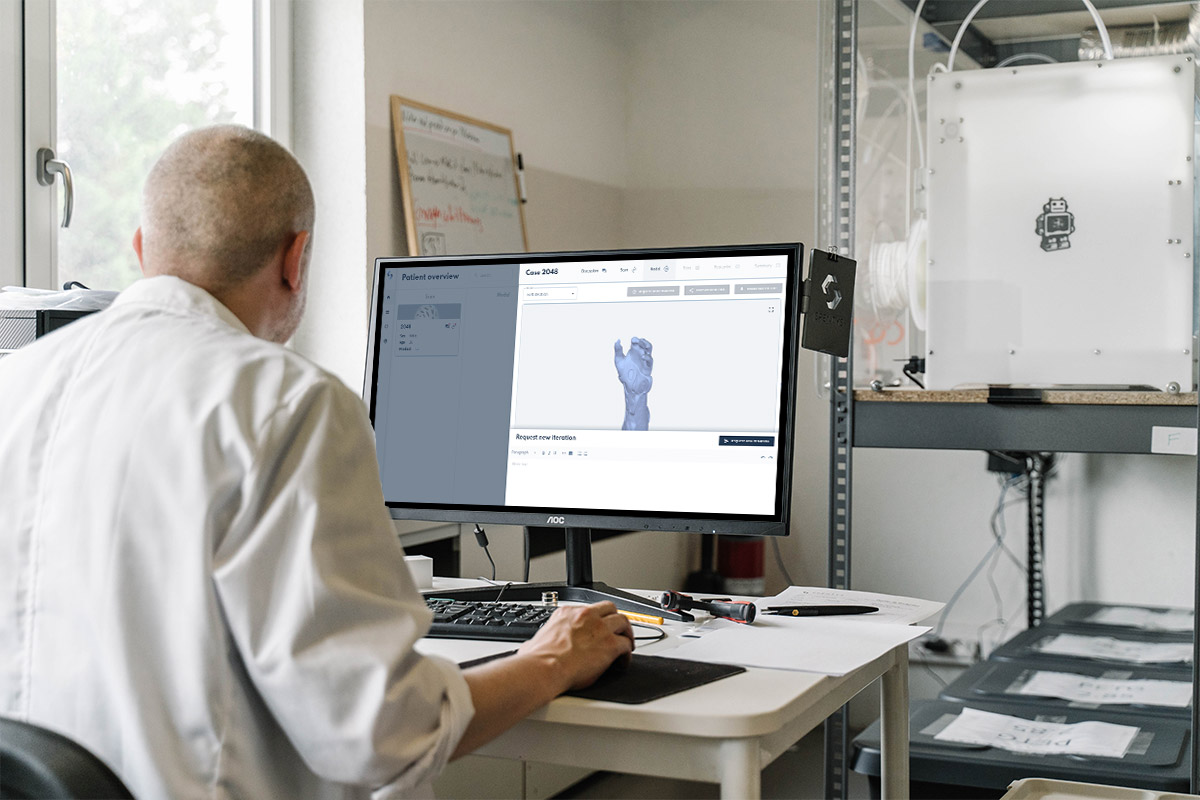How OIM Orthopedie Digitized Orthoses Manufacturing with Spentys
_________________________________________________________________________________________________________
Across the orthotics and prosthetics (O&P) sector, clinics are facing increasing pressure to modernize production workflows. Rising patient volumes, higher material costs, and a shortage of skilled technicians are making traditional plaster-based methods difficult to sustain.
OIM Orthopedie, a leading Dutch orthotics provider under the AM Healthcare Group, recognized that scaling operations without compromising clinical quality required a transition to digital solutions. In partnership with Spentys, OIM reimagined its orthosis design and manufacturing process to improve efficiency and maintain its strong clinical standards.
Together, they moved from manual craftsmanship to a clinician-centered digital workflow that combines 3D scanning, automated 3D rectification, and 3D printing. This transformation has resulted in improved operational efficiency, reduced material waste, and greater flexibility for clinicians to focus on patient care.
About OIM Orthopedie: A foundation of Expertise and Innovation
A leading Dutch provider of custom orthotic and prosthetic devices, OIM Orthopedie operates under the AM Healthcare Group, serving patients across multiple facilities in the Netherlands.
With more than 40 years of experience, OIM has built a strong reputation for clinical expertise and craftsmanship. The company is known for its patient-centered approach and commitment to maintaining high standards of quality in every device it delivers.
OIM’s continued growth and leadership in the field are supported by its drive for innovation. The company invests in modernization through expertise, data, and technology to ensure continuity of care and sustainable operations. This commitment also extends to its corporate social responsibility objectives, such as reducing waste from traditional production materials and minimizing transportation through digital workflows.
By collaborating with Spentys, OIM reinforces its position as an established leader that embraces innovation while safeguarding the precision and personal attention that defines its clinical practice.
Challenges faced before digital transformation
Before adopting digital workflows, OIM Orthopedie relied on traditional manual production methods such as plaster casting and handcrafted rectification. While these techniques had long been central to the company’s operations, they became increasingly time-consuming and labor-intensive as patient volumes grew.
Rising labor and material costs added additional pressure, while existing software solutions on the market proved too complex to integrate into everyday clinical routines. As a result, OIM faced challenges in maintaining efficiency and consistency across its facilities.
The organization also confronted a shortage of certified specialists, making it difficult to keep up with increasing patient demand. These limitations slowed production and created bottlenecks in workflow management.
At the same time, OIM recognized the need to reduce waste and environmental impact inline with its corporate social responsibility objectives. The company understood that continuing with purely manual production methods was not sustainable for long-term growth or quality assurance.
This combination of operational inefficiencies, high costs, and sustainability goals prompted OIM to seek a more scalable, clinician-friendly solution that would modernize its orthosis production without compromising the quality of patient care.
The Solution: Building a clinician-centered digital workflow
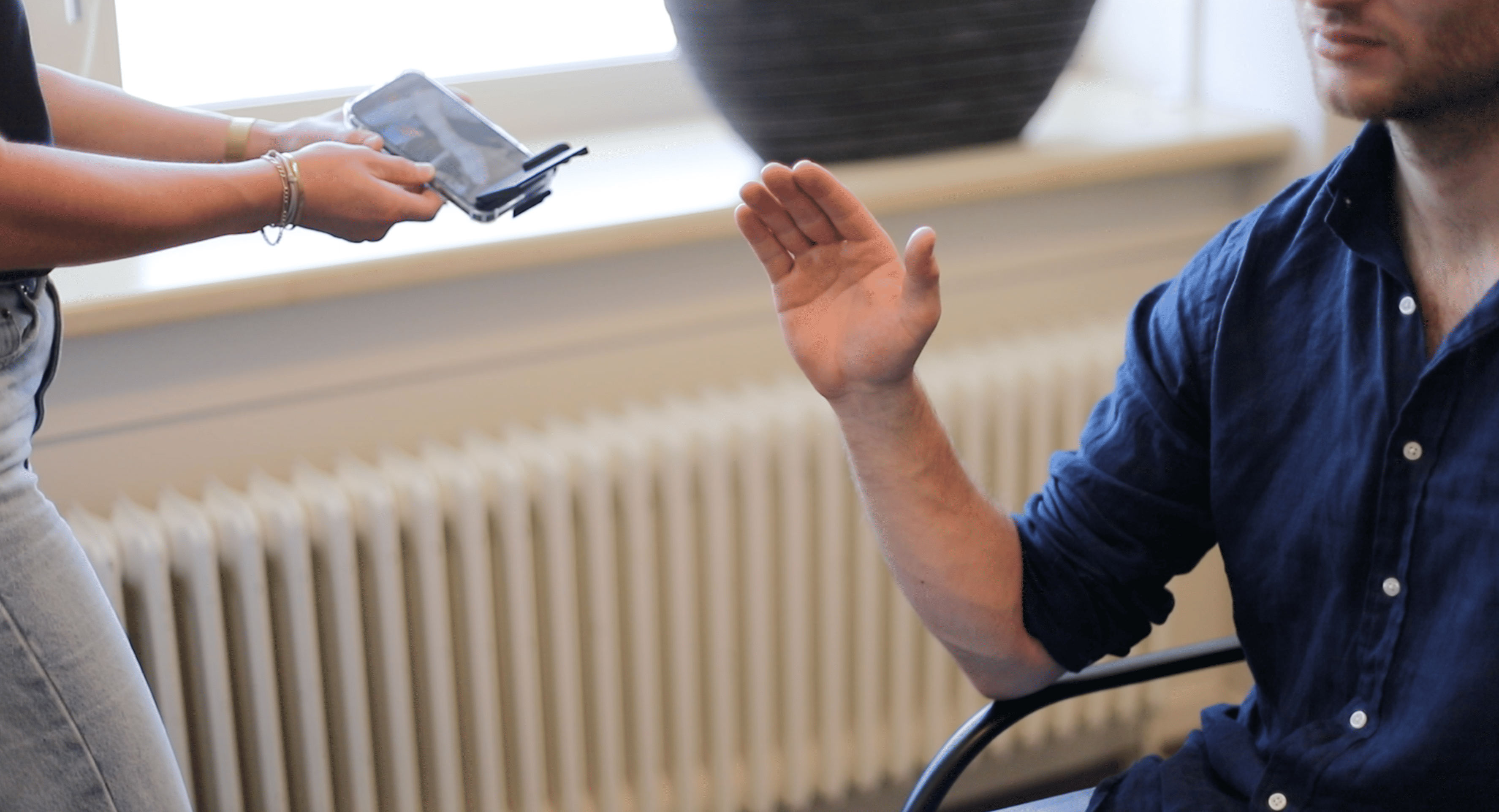
To address its production challenges, OIM Orthopedie partnered with Spentys to co-develop a clinician-centered digital design and manufacturing solution for upper limb orthoses and ankle-foot orthoses (AFOs). The collaboration focused on building a system that would simplify the design process while allowing medical professionals to retain full control over customization and clinical quality.
The Spentys platform Integrates intuitive 3D scanning, automated rectification tools, and streamlined digital workflows. It was specifically designed to be practical and easy to use for clinicians without requiring extensive technical training. Tailored to OIM’s proprietary molds and product library, the solution ensured a seamless transition from manual to digital production while preserving OIM’s craftsmanship and clinical expertise.
Implementation began with pilot projects in 2019, enabling OIM to explore digital workflows without disrupting existing operations. As the partnership developed, Spentys gradually customized the platform to match OIM’s specific clinical processes.This included moving from iPad-based scanning to a laptop-first setup, creating dedicated design templates, and providing structured training to key clinical users.
Spentys also supported OIM with continuous requirements gathering, workflow mapping, and troubleshooting, which helped accelerate internal adoption. Through close collaboration and shared development, the platform evolved into a robust, in-house digital workflow. In parallel, OIM partnered with Crispin Orthotics to further enhance its 3D printing capabilities, completing a fully integrated digital production environment.
Results: Measurable impact and clinical validation
The collaboration between OIM Orthopedie and Spentys has resulted in measurable improvements across efficiency, quality, and clinician experience. The implementation of a digital workflow now allows OIM clinicians to scan, design, and rectify orthoses entirely within one integrated process. This has created faster turnaround times and greater consistency across all facilities.
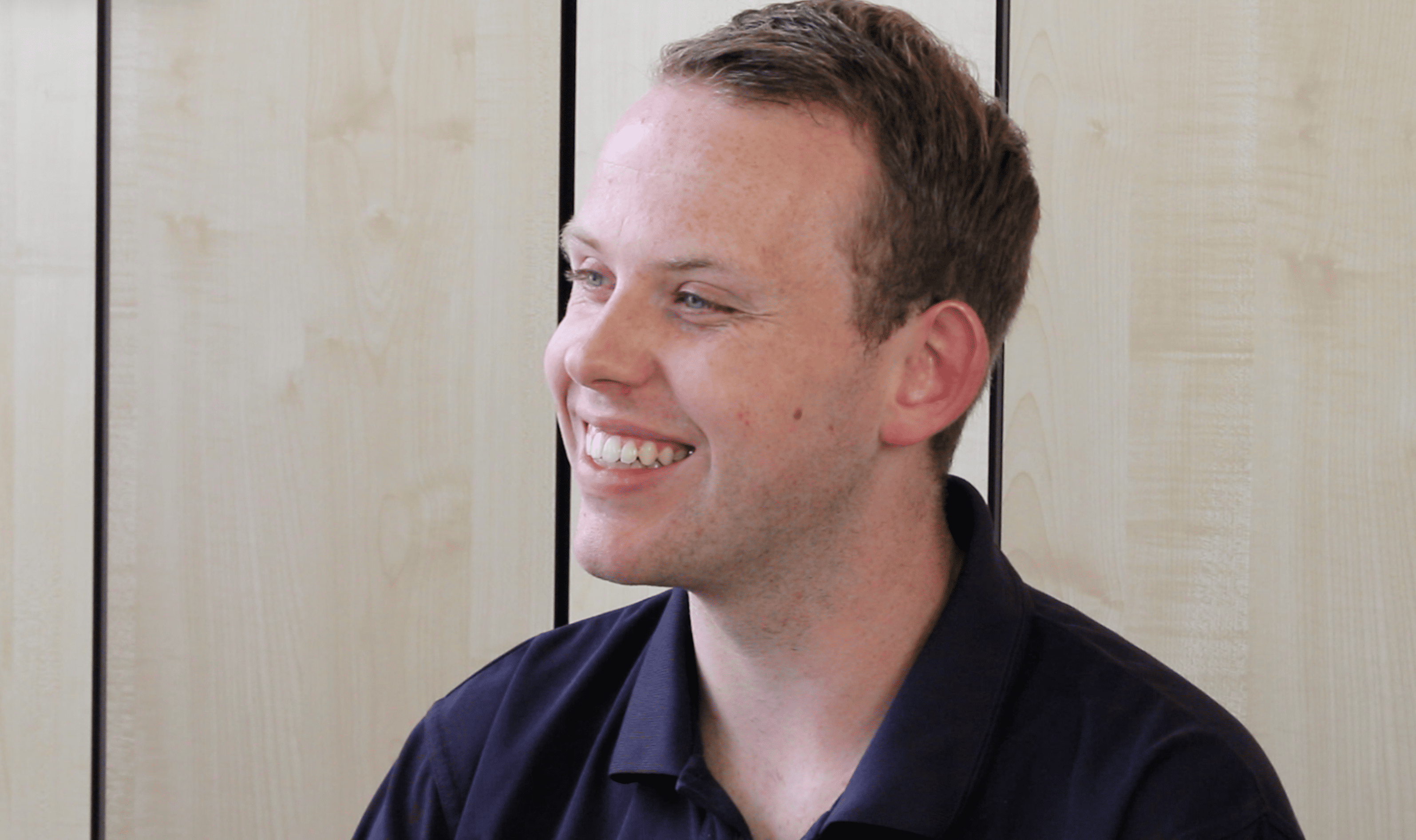
"What makes Spentys unique is that they can translate the trademarked molds we developed at OIM into usable design templates within their software. That is something we have been waiting on for years,” explains Niels Admiraal, 3D Coordinator at OIM.
This ability to embed OIM’s proprietary molds directly into the software ensures that clinical craftsmanship remains central while enabling scalable, digital production.
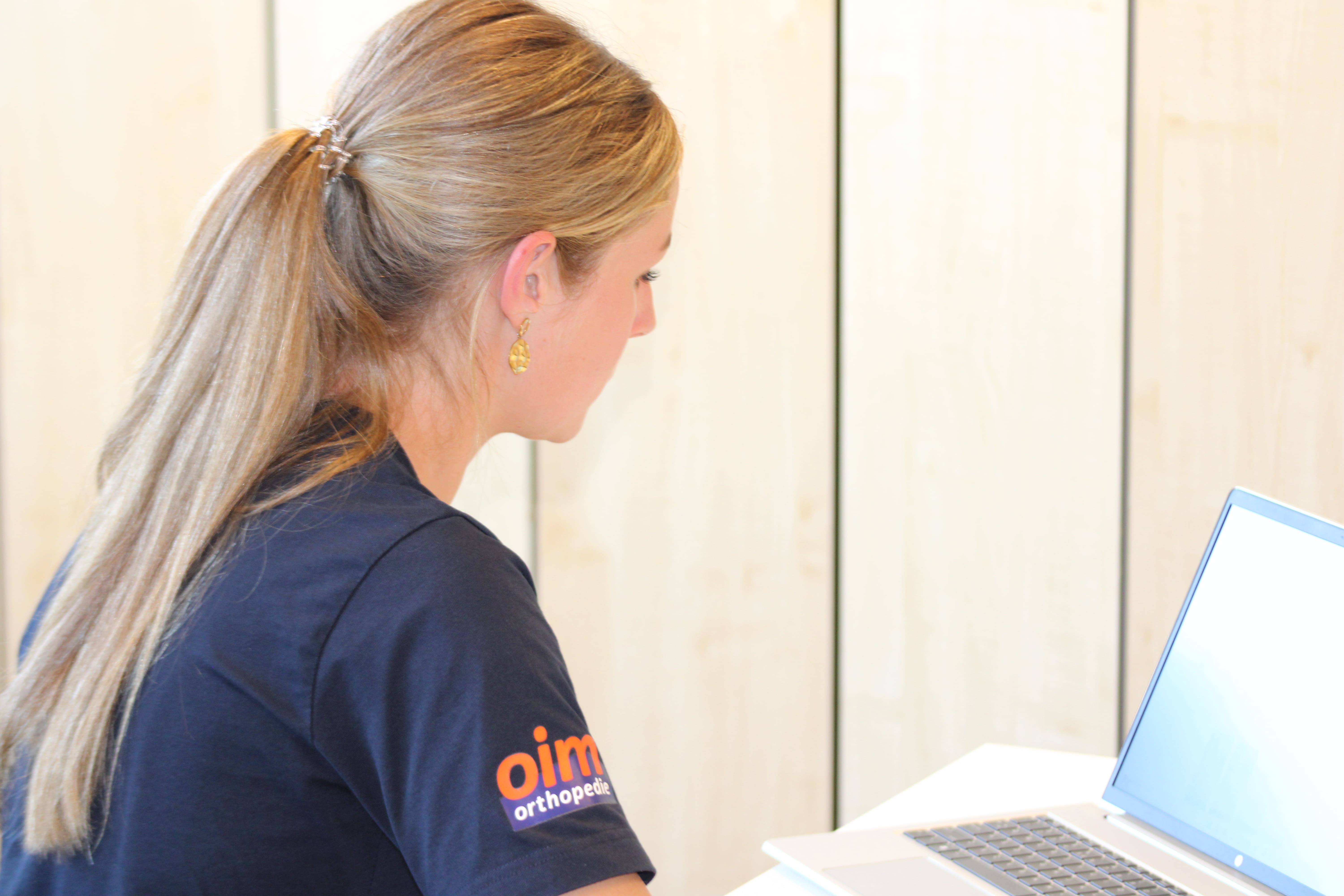
"The software is fast, easy, and lets me scan, correct, and follow up with patients all in one flow. It has changed how I feel about my daily work,” says Jet,Orthopedic Advisor at OIM.
Her experience captures the daily impact of the digital workflow, which simplifies design tasks while preserving clinical precision.
OIM has also achieved greater reproducibility by replacing physical storage with digital model archiving.
The result is a more efficient and environmentally sustainable process that reduces waste while supporting corporate responsibility objectives.
CPOs now have the flexibility to perform rectifications remotely, allowing them to serve more patients without increasing staffing levels. Internal adoption continues to expand as younger clinicians embrace the laptop-based interface aspart of their standard workflow.
The collaboration has also strengthened OIM’s innovation roadmap.

"We started small with pilot groups, and now we are scaling fast. Spentys listens, adapts, and delivers. This is a key pillar in our innovation roadmap,” says Peter de Groot, Product Group Manager Orthopedics
Building on this success, OIM is now planning the full digitalization of additional orthosis categories, including hand splints, AFOs, and torso solutions.
Setting the standard for Digital Orthotics
The experience of OIM Orthopedie demonstrates that digital transformation in orthotics and prosthetics is both achievable and sustainable when built around clinical expertise. By focusing on usability and collaboration, OIM and Spentys have shown that advanced technology can be successfully integrated into everyday practice without disrupting patient care or craftsmanship.
The results confirm that a clinician-friendly digital workflow can strengthen both operational efficiency and quality control. With 3D scanning, automated rectification, and digital storage, clinics can streamline production, maintain design precision, and scale their operations while reducing material waste and manual labor.
OIM’s transition also highlights the importance of gradual implementation and ongoing support. Pilot projects, peer training, and direct feedback loops enabled smooth adoption across multiple facilities. This approach allowed clinicians to stay in control of the design process while gaining confidence in digital tools.
For other practices, the key takeaway is that digitization does not replace clinical expertise; it enhances it. When supported by intuitive software and a partner that understands clinical workflows, digital orthotics can unlock new levels of efficiency, consistency, and patient satisfaction.
Digitizing your own O&P workflows
Is your clinic looking to scale without increasing your team size?
Spentys helps orthotics and prosthetics providers digitize design and production while maintaining the highest standards of clinical quality and patient care.
Request a demo to see how you can modernize your orthosis workflows with intuitive 3D scanning, digital rectification, and customizable design tools built for clinicians.
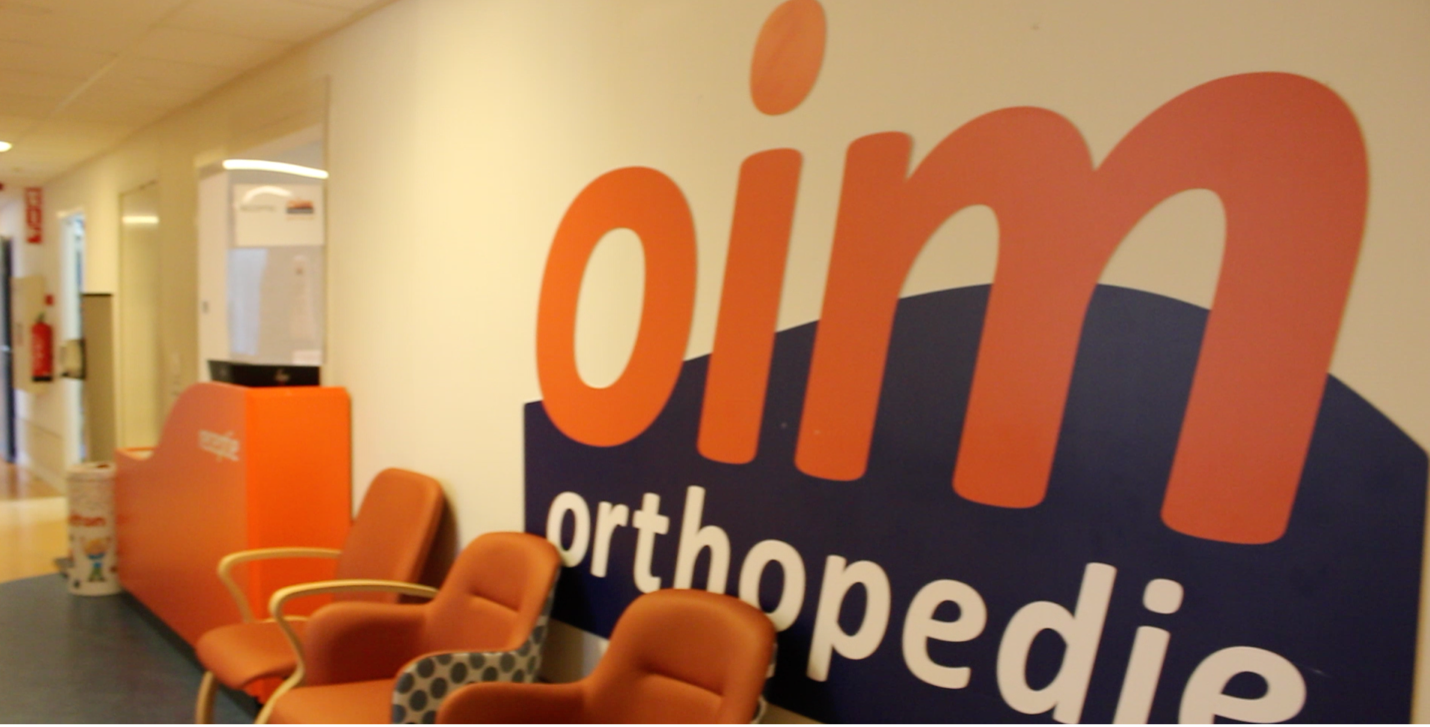

How OIM Orthopedie Digitized Orthoses Manufacturing with Spentys

_________________________________________________________________________________________________________
Across the orthotics and prosthetics (O&P) sector, clinics are facing increasing pressure to modernize production workflows. Rising patient volumes, higher material costs, and a shortage of skilled technicians are making traditional plaster-based methods difficult to sustain.
OIM Orthopedie, a leading Dutch orthotics provider under the AM Healthcare Group, recognized that scaling operations without compromising clinical quality required a transition to digital solutions. In partnership with Spentys, OIM reimagined its orthosis design and manufacturing process to improve efficiency and maintain its strong clinical standards.
Together, they moved from manual craftsmanship to a clinician-centered digital workflow that combines 3D scanning, automated 3D rectification, and 3D printing. This transformation has resulted in improved operational efficiency, reduced material waste, and greater flexibility for clinicians to focus on patient care.
About OIM Orthopedie: A foundation of Expertise and Innovation
A leading Dutch provider of custom orthotic and prosthetic devices, OIM Orthopedie operates under the AM Healthcare Group, serving patients across multiple facilities in the Netherlands.
With more than 40 years of experience, OIM has built a strong reputation for clinical expertise and craftsmanship. The company is known for its patient-centered approach and commitment to maintaining high standards of quality in every device it delivers.
OIM’s continued growth and leadership in the field are supported by its drive for innovation. The company invests in modernization through expertise, data, and technology to ensure continuity of care and sustainable operations. This commitment also extends to its corporate social responsibility objectives, such as reducing waste from traditional production materials and minimizing transportation through digital workflows.
By collaborating with Spentys, OIM reinforces its position as an established leader that embraces innovation while safeguarding the precision and personal attention that defines its clinical practice.
Challenges faced before digital transformation
Before adopting digital workflows, OIM Orthopedie relied on traditional manual production methods such as plaster casting and handcrafted rectification. While these techniques had long been central to the company’s operations, they became increasingly time-consuming and labor-intensive as patient volumes grew.
Rising labor and material costs added additional pressure, while existing software solutions on the market proved too complex to integrate into everyday clinical routines. As a result, OIM faced challenges in maintaining efficiency and consistency across its facilities.
The organization also confronted a shortage of certified specialists, making it difficult to keep up with increasing patient demand. These limitations slowed production and created bottlenecks in workflow management.
At the same time, OIM recognized the need to reduce waste and environmental impact inline with its corporate social responsibility objectives. The company understood that continuing with purely manual production methods was not sustainable for long-term growth or quality assurance.
This combination of operational inefficiencies, high costs, and sustainability goals prompted OIM to seek a more scalable, clinician-friendly solution that would modernize its orthosis production without compromising the quality of patient care.
The Solution: Building a clinician-centered digital workflow

To address its production challenges, OIM Orthopedie partnered with Spentys to co-develop a clinician-centered digital design and manufacturing solution for upper limb orthoses and ankle-foot orthoses (AFOs). The collaboration focused on building a system that would simplify the design process while allowing medical professionals to retain full control over customization and clinical quality.
The Spentys platform Integrates intuitive 3D scanning, automated rectification tools, and streamlined digital workflows. It was specifically designed to be practical and easy to use for clinicians without requiring extensive technical training. Tailored to OIM’s proprietary molds and product library, the solution ensured a seamless transition from manual to digital production while preserving OIM’s craftsmanship and clinical expertise.
Implementation began with pilot projects in 2019, enabling OIM to explore digital workflows without disrupting existing operations. As the partnership developed, Spentys gradually customized the platform to match OIM’s specific clinical processes.This included moving from iPad-based scanning to a laptop-first setup, creating dedicated design templates, and providing structured training to key clinical users.
Spentys also supported OIM with continuous requirements gathering, workflow mapping, and troubleshooting, which helped accelerate internal adoption. Through close collaboration and shared development, the platform evolved into a robust, in-house digital workflow. In parallel, OIM partnered with Crispin Orthotics to further enhance its 3D printing capabilities, completing a fully integrated digital production environment.
Results: Measurable impact and clinical validation
The collaboration between OIM Orthopedie and Spentys has resulted in measurable improvements across efficiency, quality, and clinician experience. The implementation of a digital workflow now allows OIM clinicians to scan, design, and rectify orthoses entirely within one integrated process. This has created faster turnaround times and greater consistency across all facilities.

"What makes Spentys unique is that they can translate the trademarked molds we developed at OIM into usable design templates within their software. That is something we have been waiting on for years,” explains Niels Admiraal, 3D Coordinator at OIM.
This ability to embed OIM’s proprietary molds directly into the software ensures that clinical craftsmanship remains central while enabling scalable, digital production.

"The software is fast, easy, and lets me scan, correct, and follow up with patients all in one flow. It has changed how I feel about my daily work,” says Jet,Orthopedic Advisor at OIM.
Her experience captures the daily impact of the digital workflow, which simplifies design tasks while preserving clinical precision.
OIM has also achieved greater reproducibility by replacing physical storage with digital model archiving.
The result is a more efficient and environmentally sustainable process that reduces waste while supporting corporate responsibility objectives.
CPOs now have the flexibility to perform rectifications remotely, allowing them to serve more patients without increasing staffing levels. Internal adoption continues to expand as younger clinicians embrace the laptop-based interface aspart of their standard workflow.
The collaboration has also strengthened OIM’s innovation roadmap.

"We started small with pilot groups, and now we are scaling fast. Spentys listens, adapts, and delivers. This is a key pillar in our innovation roadmap,” says Peter de Groot, Product Group Manager Orthopedics
Building on this success, OIM is now planning the full digitalization of additional orthosis categories, including hand splints, AFOs, and torso solutions.
Setting the standard for Digital Orthotics
The experience of OIM Orthopedie demonstrates that digital transformation in orthotics and prosthetics is both achievable and sustainable when built around clinical expertise. By focusing on usability and collaboration, OIM and Spentys have shown that advanced technology can be successfully integrated into everyday practice without disrupting patient care or craftsmanship.
The results confirm that a clinician-friendly digital workflow can strengthen both operational efficiency and quality control. With 3D scanning, automated rectification, and digital storage, clinics can streamline production, maintain design precision, and scale their operations while reducing material waste and manual labor.
OIM’s transition also highlights the importance of gradual implementation and ongoing support. Pilot projects, peer training, and direct feedback loops enabled smooth adoption across multiple facilities. This approach allowed clinicians to stay in control of the design process while gaining confidence in digital tools.
For other practices, the key takeaway is that digitization does not replace clinical expertise; it enhances it. When supported by intuitive software and a partner that understands clinical workflows, digital orthotics can unlock new levels of efficiency, consistency, and patient satisfaction.
Digitizing your own O&P workflows
Is your clinic looking to scale without increasing your team size?
Spentys helps orthotics and prosthetics providers digitize design and production while maintaining the highest standards of clinical quality and patient care.
Request a demo to see how you can modernize your orthosis workflows with intuitive 3D scanning, digital rectification, and customizable design tools built for clinicians.







